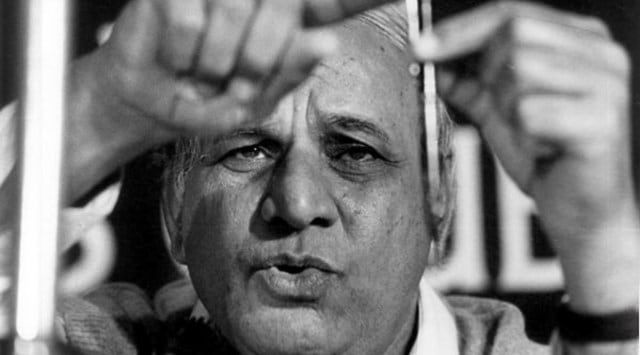
Eighteen years after his passing, Kanshi Ram stands as a titan in the shadows of Indian history — the most consequential political architect, never fully appreciated. He was not a mere leader of the oppressed; he was a political engineer who dismantled the very architecture of power in North India and began building a new one in its place. His life’s work, the audacious project of forging social consciousness into unassailable political assertion, permanently scarred the landscape of Indian democracy. In an era where identity politics is both weaponised and diluted, Kanshi Ram’s strategic genius offers a searing, indispensable lens through which to view India’s perpetual democratic churn.
Kanshi Ram’s crusade was ignited by a single, electrifying conviction that became his battle cry: “Power is the master key to all problems.” A government scientist by training, he diagnosed with clinical precision the fatal flaw in India’s democratic experiment — that constitutional guarantees were meaningless without political clout. He famously declared, “I am not in politics to get a share of the power cake, but to change the very recipe of the cake itself.” His early creations, BAMCEF and DS4, were not political parties but intellectual and moral boot camps. Their mission was alchemical — to transmute the fragmented, subordinate identities of caste into a single, formidable political force, the Bahujan, or “the majority,” a sleeping giant of Dalits, OBCs, Adivasis, and minorities.
With the founding of the Bahujan Samaj Party (BSP) in 1984, Kanshi Ram declared war on the elite-led political establishment. His strategy of “social engineering” was a political earthquake, creating a coalition so potent it cracked the foundations of both the Congress and the nascent BJP. Uttar Pradesh, the nation’s political heartland, became his laboratory. By the 1990s, the BSP had not merely entered the political arena; it had rewritten its rules, forcing the old guard to negotiate with those they had once taken for granted as silent vote banks. He operated on a simple, powerful principle: “The vote is a weapon. Use it wisely, use it unitedly, and use it to defeat your oppressors.”
The ultimate validation of his mission came in the form of his protégé, Mayawati. Her ascent from a modest Dalit background to the Chief Minister’s chair in India’s most populous state was not just a political victory; it was a radical rupture in the nation’s social fabric. Under her leadership, the BSP executed a profound act of political translation — turning Dalit assertion into the hard currency of governance. The erection of statues and memorials was not mere symbolism; it was a deliberate, defiant rewriting of the visual and moral geography of a state long dominated by upper-caste iconography.
Yet, in the years since his passing, the Bahujan edifice has shown cracks. The grand, inclusive coalition Kanshi Ram envisioned has frayed. The BSP’s strategic pivot from Bahujan Hitay (Welfare of the Majority) to Sarvajan Sukhay (Happiness for All), while tactically expansive, blunted its revolutionary ideological edge. Simultaneously, the BJP executed a masterstroke, co-opting his playbook to weave non-dominant OBCs and Dalits under the subaltern Hindutva umbrella. The BSP’s electoral struggles today reflect the crisis of a caste-based politics besieged by welfare populism and a powerful, aspirational nationalism.
Kanshi Ram’s genius lay in his ruthless pragmatism. His triad, “Educate, Organise, Agitate” borrowed from Ambedkar but was sharpened into a weapon of electoral conquest. This was transformative electoralism — A cold-eyed understanding that in a democracy, protest without power is merely performance. Through meticulous cadre-building and unshakeable moral clarity, he transformed humiliation into a political capital.
Today, the Bahujan project, while weakened, pulses with undiminished relevance. Social inequality remains entrenched in the corridors of bureaucracy, media, and academia. Caste violence mutates into new, insidious forms. The critical question is no longer if Bahujan politics will survive, but how it will evolve to reclaim its disruptive potential.
The political landscape is now defined by this absorption of Kanshi Ram’s ideas by his erstwhile rivals. The Congress has made a strategic pivot towards social justice, championing a nationwide caste census and breaching the 50 percent quota limit, a direct, if belated, acknowledgment of the demographic reality Kanshi Ram championed. Similarly, the Samajwadi Party, with its core OBC base, has increasingly made overtures to Dalit communities, attempting to build a broader Mandal-style coalition that can challenge the BJP. Yet, these efforts often represent an appropriation of his language for electoral arithmetic, lacking the foundational focus on autonomous Dalit empowerment that was the bedrock of his movement.
This is the defining paradox of our time — the political space Kanshi Ram carved out is now the central battleground. The BJP’s “Hindutva plus welfare” model and the Congress’s “social justice plus data” framework are both attempts to absorb and neuter his emancipatory vision. In both, his radical imagination is diluted into a manageable populism.
Yet, Kanshi Ram’s legacy endures because it is rooted in a deeper, moral conception of democracy—one of dignity and self-respect.
His clarion call —“Jiski jitni sankhya bhari, uski utni bhagedari” (The share in power should be equal to the share in population)—was a revolutionary demand, both ethical and mathematical.
He said, “We were not born to live as second-class citizens.” This was a declaration of agency, a rejection of victimhood. To remember Kanshi Ram, therefore, is not an act of nostalgia. It is to recognise that the master key of power he forged still lies in waiting, ready to unlock the door to a truly equal and just Republic.
The writer is a professor, DDU Gorakhpur University